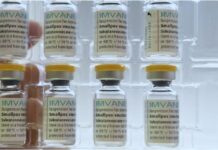Skin rashes can be symptoms of a variety of mild to serious conditions. Since many factors go into accurate diagnosis and treatment of rashes, it’s important to see a medical professional.
If you experience fever, pain, or trouble breathing in addition to a rash, you should seek immediate medical care.
Many rashes are simply harmless and uncomfortable, but some rashes can be indicators of some serious and even life-threatening conditions.
Although it’s important to realize that not every rash can be treated with simple home care, it’s equally important to know that not every rash means you’re on your deathbed.
As is always the case with health concerns, your doctor is the best authority to consult about your specific experience.
Here are some signs your rash is more serious than you thought.
Although new medications or beauty products can lead to rashes, a wide variety of serious conditions may be responsible for your rash, according to the American Academy of Dermatology.
There are many types of rashes that can’t accurately be identified without medical training, especially since a lot of common rash descriptions (like scaly, blotchy, or itchy) can apply to multiple types of rashes.
Furthermore, rashes might stay confined to one specific area of your body or be spread out all over depending on their cause. Because rashes aren’t always simple, it’s important to consult a medical professional about your rash when possible.
There could be signs your rash is infected or at risk of becoming infected
The immediate sense of relief that comes with scratching can feel good, but any time you break your skin you run the risk of infection.
According to Healthline, some indicators that your rash is infected include pus, blisters, and discolored skin. If this is the case, you’ll want to seek medical attention.
According to the Keck School of Medicine at the University of Southern California, there are many rashes indicators that signify you should immediately seek medical attention.
These include pain, a fever, blisters, bruises around your rash, the sudden onset of a rash that has quickly spread around your body, a circular rash, or changes to your skin’s color or texture.
The American Academy of Dermatology also advises seeking professional care immediately if you experience trouble breathing in addition to your rash.




